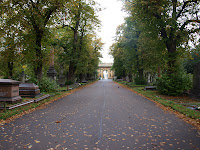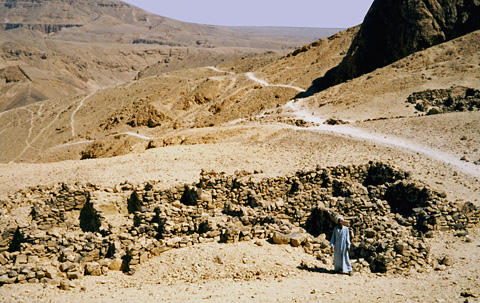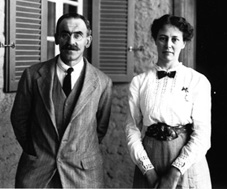 |
| The confluence of the Nile at Khartoum |
For the last four weeks I've been working and travelling through Northern Sudan, not only missing a great chunk of the bitter British winter but also gaining valuable experiences along the way. I flew into
Khartoum on January 7th where I had a couple of hours to see some of the city, including the
confluence of the Nile.
 |
| The temple of Akhenaten at Sesebi |
I was based at
Sesebi on the west bank of the Nile just north of the Third Cataract, which was the site chosen by
Akhenaten for a colonial temple-settlement during the early part of his reign, working as part of a joint
University of Cambridge and
Austrian Archaeological Institute mission. The three surviving columns of the tripartite temple, dedicated to the
Theban triad, are the most recognizable elements of the site, though it is also still possible to see the associated settlement, storage magazines and enclosure wall of Akhenaten amongst evidence of earlier 18th Dynasty occupation. Sesebi was excavated between 1936 and 1938 by the
Egypt Exploration Society, who published short reports of their findings but did not publish their work in full. Whilst at the site I worked on the documentation of the Sesebi New Kingdom ceramic corpus, which allowed me to gain an in-depth knowledge of a wide variety of vessels and their manufacture, as well as to question their precise function in antiquity.
 |
| Sunrise on Sai Island |
I also found time for several site visits with my colleagues from Sesebi. The first of which was to
Sai Island, where a New Kingdom settlement and an Ottoman fort are still well preserved. Sai is probably the most picturesque place I can say I have ever visited, and we were lucky to have arrived when very few biting flies were in residence due to the harsh winds! I then travelled on to
Amara West, the site of a Ramesside settlement and cemetery currently under investigation by the British Museum. Both Sai and
Amara West are situated to the north of Sesebi and so were within an hour's drive of the site.
 |
| The temple of Amenhotep III at Soleb |
On the second day trip we headed to the temple of
Amenhotep III at
Soleb, which was an hour's drive north and is comparable in some aspects of style to Sesebi, and the temple of
Queen Tiye at
Sedeinga. This visit was a personal highlight for me as both of these sites had played a major role in my BA and MA research into the art and architecture of Amenhotep III. Soleb is the site of a sandstone temple dedicated by Amenhotep III to
Amun-Re and to his own deified form,
Nebma'atre Lord of Nubia, together with New Kingdom and
Merotic cemeteries. Sedeinga was the site chosen by Amenhotep III for a sandstone temple dedicated to the cult of his principal queen, Tiye. The temple itself lies in ruins, with only a single column left standing, though it still remains a spectacular sight alongside a large Merotic cemetery. Both Soleb and Sedeinga preserve many inscribed blocks, several of which, despite their beauty, are unfortunately being slowly destroyed as a result of graffiti. This day finished with a visit to
Gebel Dosha, where after climbing up the rock face we were rewarded with a rock-chapel of Tuthmosis III and several New Kingdom rock stelae carved into the gebel. We also met several caravans heading back on the desert roads containing hundreds of camels!
 |
| The temple of Queen Tiye at Sedeinga |
The final day on site meant a brief visit to
Gebel Sese, around 1km walk from site, where impressive mud and stone architecture dating to the Medieval and Ottoman periods can be seen by hiking up to the top, which is also the best place to get a panoramic view of Sesebi itself. The next day meant a ten-hour road journey to Khartoum, and then a flight back to Heathrow which thankfully was allowed to land despite the conditions in London!
 |
| The top of Gebel Sese, looking down onto Sesebi |
Further Reading:
 Yesterday I attended another of Cathie Bryan's wonderful walking tours of the Egyptianising monuments of London, this time the Petrie Museum's 'Egypt Undead' tour of Brompton Cemetery in South-West London. This cemetery covers 16.5 hectares and is described as 'one of the finest cemeteries in the country', containing a number of monuments of great historical interest including that of Emmeline Pankhurst, leader of the British Suffragette Movement.
Yesterday I attended another of Cathie Bryan's wonderful walking tours of the Egyptianising monuments of London, this time the Petrie Museum's 'Egypt Undead' tour of Brompton Cemetery in South-West London. This cemetery covers 16.5 hectares and is described as 'one of the finest cemeteries in the country', containing a number of monuments of great historical interest including that of Emmeline Pankhurst, leader of the British Suffragette Movement. 











































